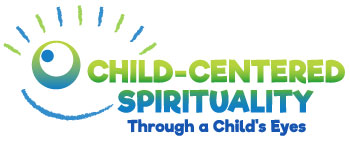Skill #1: Attentiveness: Notice spiritual activity in children.
Attentiveness is used most often in the context of everyday life, but don’t overlook its presence here:
- Dreams
- Awe-inspiring activities
- Peace in hard times
- Out-of-control events
- Coincidences and unexplainable events
Skill #2: Active listening: Engage the child in conversation about it.
- Dreams — “As my son was going to sleep he said he was afraid to go to heaven because he didn’t know what it would look like. I told him to ask God to show him while he was asleep.” Later, his mom listened to the dream and asked if it took away her son’s fear.
 Awe-inspiring activities — When a teenage girl was asked what she liked about surfing, she said: “For me, just being in nature and feeling the ocean as this elemental force, and then doing some sort of meditation. I think yoga is a good starting point.”“
Awe-inspiring activities — When a teenage girl was asked what she liked about surfing, she said: “For me, just being in nature and feeling the ocean as this elemental force, and then doing some sort of meditation. I think yoga is a good starting point.”“- Peace in hard times: “I was 6, maybe 7, when my pet cat died. I wanted to know where my cat went, why she couldn’t come back, etc. I was completely satisfied with my parents’ answers of “She went to Heaven.” God is watching over her now.” I felt peace. I remember it distinctly. That’s when I realized that there was someone watching and caring for us that we couldn’t see or touch, but they were out there.”
- Out-of-control events: “During the pandemic things were out of control and I didn’t expect anything positive to come out of it. My mother helped me recognize some good things did come out of it.”
- Coincidences and unexplainable events: “My teenage daughter called me to tell me that she had pulled a 10-year-old up from the bottom of the pool where she lifeguards. The next morning she said, ‘I couldn’t sleep last night, Ma. I kept thinking about that girl and what might have happened if I hadn’t rescued her.’ And I responded, ‘You did something extraordinary. You should feel incredibly good about yourself.’”
Skill #3: Acceptance: Discern if the child wants information or empathy.
Pay attention to this distinction. Accept it either way and respond accordingly. The child in Situation 3 needs information about her cat. The child in Situation 5 wants understanding.
